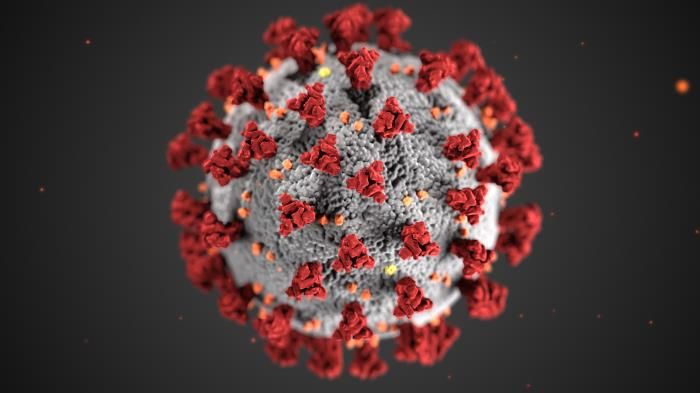Acute Stroke Predicts Negative Outcome in COVID-19 Patients with Neuroimaging Findings
Half of patients hospitalized who have neurological findings for acute stroke could die.

Half of hospitalized COVID-19-positive patients who have neuroimaging findings for acute stroke will die, according to newly published research.
According to research published in the Journal of the Neurological Sciences, acute stroke is the most common neuroimaging finding in this patient group, but capturing the images can be complicated.
“Our data demonstrates, for the first time, that when neuroimaging shows acute large ischemic stroke or hemorrhagic stroke in admitted COVID-19 patients, it is one of the strongest prognostic markers of poor outcomes, even more than age and other previously reported co-morbidities, such as hypertension and obesity,” said lead study author Rajan Jain, M.D., neuroradiologist at NYU Langone Health. “COVID-19 patients who have a large ischemic or hemorrhagic stroke on imaging have a 50-percent mortality in the current study.”
To determine the incidence and kind of neuroimaging findings present in this patient group, Jain’s team conducted a retrospective study of 3,218 patients who had a confirmed COVID-19 diagnosis with the RT-PCR test who were admitted to three New York City hospitals between March 1 and April 13, 2020. Of the group, 454 patients (14.1 percent) underwent 716 neuroimaging studies – the number of studies accounted for 5.4 percent of 13,314 imaging exams of all types that were conducted on these patients during their entire hospitalization.
Head CT was the most common study (81.8 percent), with other studies including head and nect CT angiography, CT perfusion, brain MRI, MRA/MRV, and spine MRI. Clinical indications prompting most neuroimaging included altered mental status or delirium, stroke, and mechanical fall or trauma.
Among the overall patient group who underwent neuroimaging, 38 patients (8.4 percent) had acute neuroimaging findings. Based on study analysis, 14.1 percent of admitted COVID-19 patients underwent neuroimaging, accounting for 5.5 percent of total imaging studies. Of patients with positive neuroimaging studies, 92.5 percent had acute stroke, a finding that was present in 1.1 percent of COVID-19-postitive patients. For 63 percent of those patients positive for the virus with neuroimaging findings, signs of acute stroke were the initial COVID-19 manifestation.
Although these findings offer important information about neuroimaging and COVID-19, the investigators said, obtaining the images could be difficult.
“Neuroimaging studies have tended to constitute a larger percentage of overall diagnostic imaging use in hospital admitted patients,” they wrote. “However, COVID-19 being a pandemic associated primarily with pulmonary disease has led to the chest being the predominant [area] imaged.”
Overall, they said, there are three reasons why gathering neuroimages can be harder in this environment. First, they reported, the neurological complications, including delirium, encephalopathy, inflammatory neuropathy, and autonomic dysfunction, may not necessarily be associated with abnormalities seen on neuroimaging. Second, patient isolation combined with the need for strict precautions and stringent disinfection protocols may have limited the ability to conduct detailed neurological exams, as well as neuroimaging, particularly MRI. Third, critically ill patients are frequently intubated, making transport difficult and underdiagnosis possible. And, lastly, these patients are also often unconscious, making the identification of new neurological complications less likely.
“Our study also highlights the fact there is restricted use of neuroimaging in COVID-19 patients due to multiple logistical constraints, including the severity of their illness and the concern of spread of infection by imaging,” the team wrote.
Meta-Analysis Shows Merits of AI with CTA Detection of Coronary Artery Stenosis and Calcified Plaque
April 16th 2025Artificial intelligence demonstrated higher AUC, sensitivity, and specificity than radiologists for detecting coronary artery stenosis > 50 percent on computed tomography angiography (CTA), according to a new 17-study meta-analysis.
Could Lymph Node Distribution Patterns on CT Improve Staging for Colon Cancer?
April 11th 2025For patients with microsatellite instability-high colon cancer, distribution-based clinical lymph node staging (dCN) with computed tomography (CT) offered nearly double the accuracy rate of clinical lymph node staging in a recent study.
AMA Approves Category III CPT Codes for AI-Enabled Perivascular Fat Analysis from CT Scans
April 9th 2025Going into effect in 2026, the new CPT codes may facilitate increased adoption of the CaRi-Heart software for detecting coronary inflammation from computed tomography scans pending FDA clearance of the technology.
FDA Clears AI Assessment of Ischemic Core Volume on CT with Brainomix 360 Platform
April 8th 2025For patients with acute ischemic stroke, research has demonstrated that automated assessment of ischemic core volume on brain CT scans via the Brainomix 360 software is equivalent to that derived from CT perfusion.










